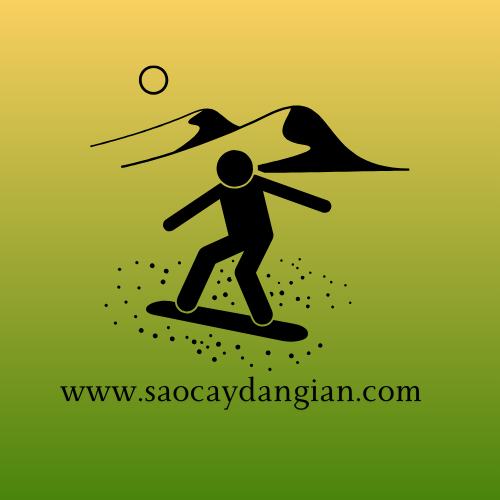
“Evaluate the hardness of sandboards and make safe choices
Are you wondering how hard you should choose a sandboard to ensure safety? Don't worry, we will help you evaluate and choose the safest sandboard.”
I. Introduction to sandboards and the importance of stiffness in choosing sandboards
A sandboard, also known as a sandboard, is a type of skateboard used on sand or desert. The hardness of the sandboard plays an important role in choosing the right product. The stiffness of the board affects control, speed and flexibility when sliding on sand.
1. The importance of stiffness in choosing sandboards
– The hardness of sandboards affects control and flexibility when sliding on sand. A board that is too soft can cause loss of stability and make it difficult to control when sliding.
– Depending on the purpose of use, players need to choose sandboards with appropriate hardness to ensure safety and the best experience when sliding on sand.
– For beginners, choosing sandboards with moderate hardness will help them easily learn and improve their sandboarding skills.
II. Evaluate the stiffness of your sandboard and its impact on experience and safety of use

1. Evaluate the hardness of the sandboard
According to skateboard experts, the hardness of a sandboard is evaluated based on the board's stiffness coefficient. This stiffness coefficient reflects the stiffness of the board when impacted by the player's body weight. Stiff skis will provide stability and good grip on the surface, but can also feel stiff and difficult to control for new players.
2. Impact of sandboard hardness on experience and safety when used
– Experience: The hardness of the sandboard affects the player's experience. A board that is too hard can reduce flexibility and comfort when sliding, while a board that is too soft can cause a feeling of loss of control.
– Safety: The hardness of the skateboard also affects safety when used. A board that is too hard can create a feeling of instability and can be dangerous when performing technical movements, while a board that is too soft can lead to loss of control and a higher risk of falling.
Choosing the right hardness of sandboards will help improve the experience and ensure safety when used.
III. Factors to consider when choosing a sandboard with the right stiffness
When choosing a sandboard, the board's stiffness is an important factor to consider. The hardness of the board affects the experience of skating and the ability to perform tricks. Here are factors to consider when choosing a sandboard with the right stiffness:
1. Board material
– Sandboards are made from many different materials such as maple wood, birch wood, or composite. Each type of material will have different hardness, affecting the sliding experience.
2. Player weight
– The player's weight also affects the hardness of the sandboard. Heavier players need to choose boards with higher stiffness to support the weight.
3. Sliding style
– The player's sliding style also needs to be considered. People who like to skate fast and perform skill tricks need boards with different stiffness than those who like to skate around and demonstrate comfort while skating.
The above factors will help players choose sandboards with the right hardness, creating the best skating experience.
IV. There are risks associated with choosing sandboards that are not suitable in terms of stiffness
Choosing sandboards that are not suitable for hardness can cause the following risks:
1. Risk of injury
- The hardness of the sandboard affects the elasticity and flexibility of the board. If you choose a board that is too hard, the risk of injury when falling or performing sliding techniques will increase.
- Players may experience injuries to joints and muscles due to strong impacts when skating on unsuitable boards.
2. Poor control ability
- Sandboards that are too stiff can reduce the player's control, especially when moving on uneven, rough terrain.
- This can lead to loss of balance, falling backwards and is dangerous for the player.
Choosing the right sandboard in terms of hardness is very important to ensure safety and a good experience when playing sandboarding.
V. Benefits of choosing sandboards with safe hardness
1. Safe to use
Choosing sandboards with safe hardness will help ensure safety when used. With safe hardness, the skateboard will maintain stability and will not cause the risk of slipping or falling when in use. This is very important especially for beginners on skateboards, to avoid unwanted accidents.
2. Increase sliding experience
Sandboards have a safe hardness that also helps increase the sliding experience. With the right stiffness, players can easily control the skateboard and perform technical movements more flexibly and easily. This will create a more enjoyable and exciting experience when playing skateboards.
3. Save costs
Choosing sandboards with safe hardness also helps save costs for players. With quality and safe skateboards, players will not have to worry about frequent repairs or replacements due to damage or failure. This will help save costs and time for players.
VI. Conclusion and recommendations on choosing sandboards with appropriate hardness to ensure safety when used
When playing sandboarding, choosing a skateboard with the right hardness is very important to ensure safety when used. For beginners, it is necessary to pay attention to the hardness of the skateboard to avoid imbalance and the risk of falling while sliding.
Recommendation:
- Choose a sandboard with moderate hardness, not too hard for easy control and not too soft to ensure stability when sliding.
- Carefully learn information about the hardness of the skateboard before purchasing, you can consult with experienced players or skateboard experts.
- Test the skateboard before buying to feel the hardness and see if it is suitable for your level or not.
To ensure safety when sandboarding, you should choose skateboards with a hardness appropriate to the level and weight of the player. Choosing the right sandboard will help reduce the risk of injury and increase the fun of playing.



